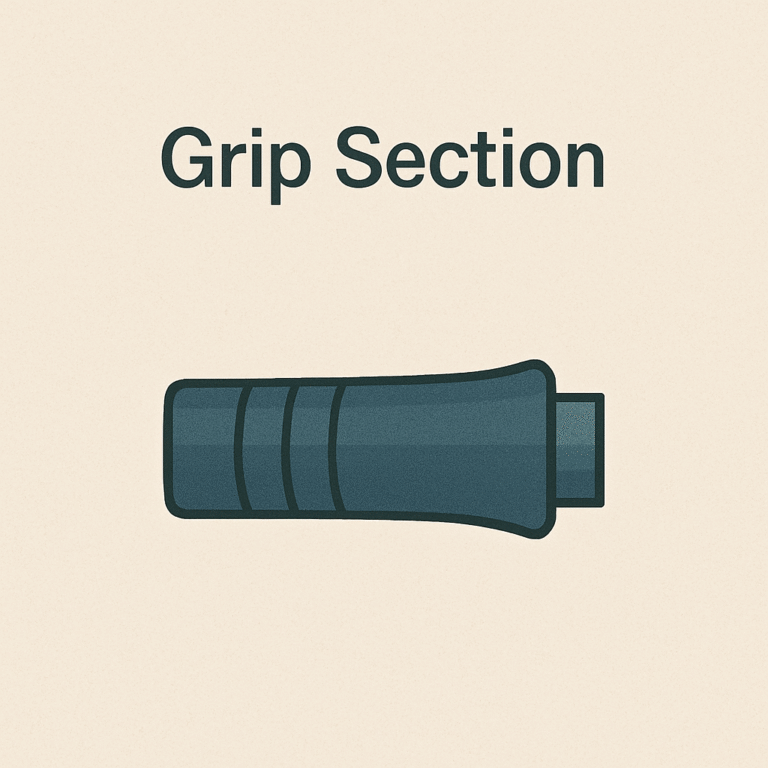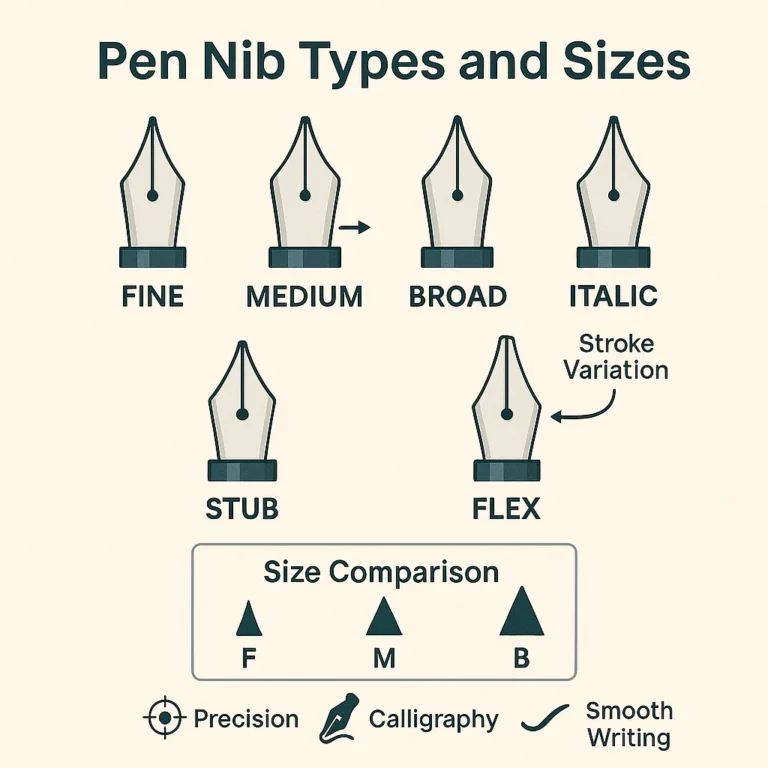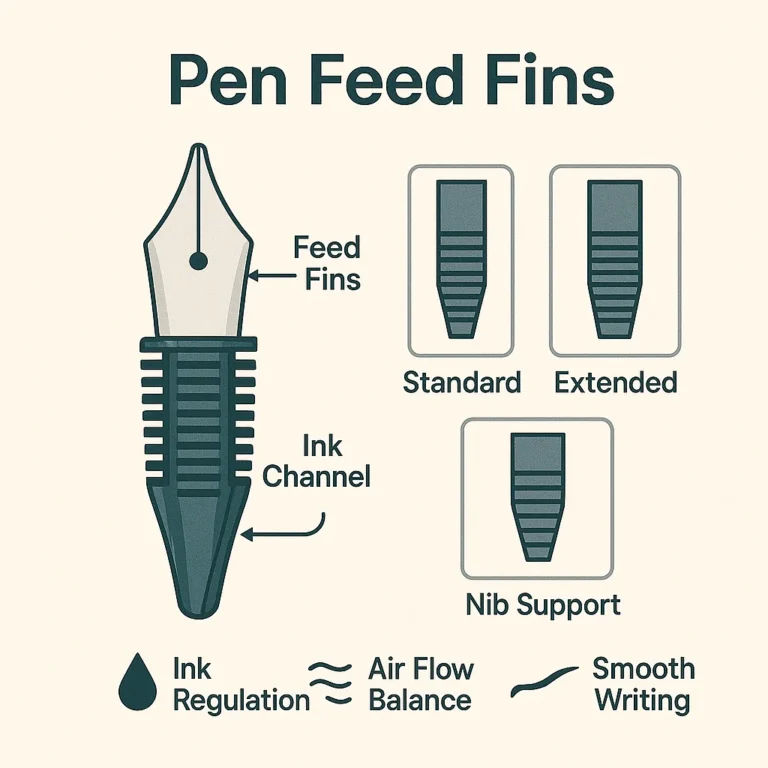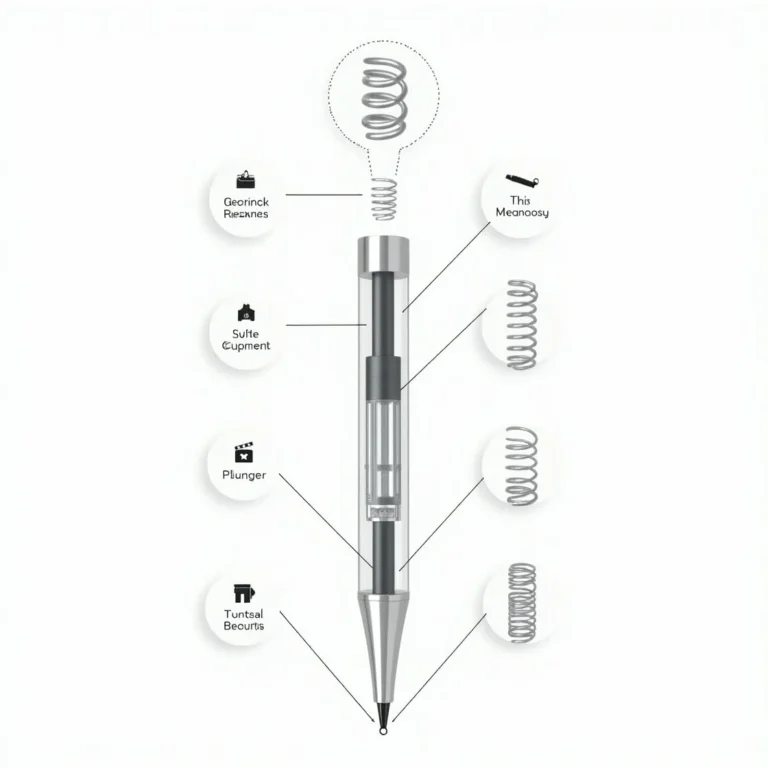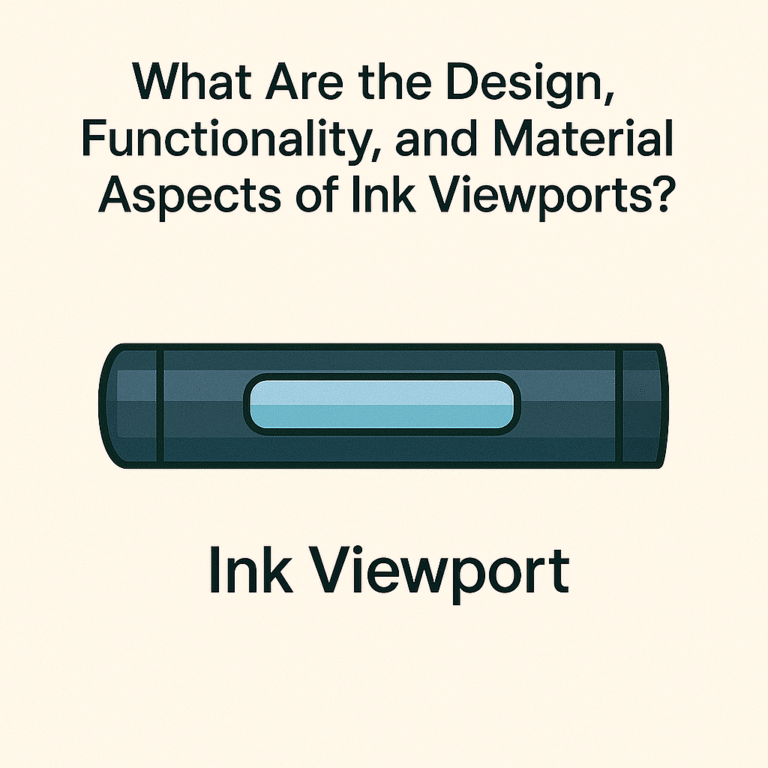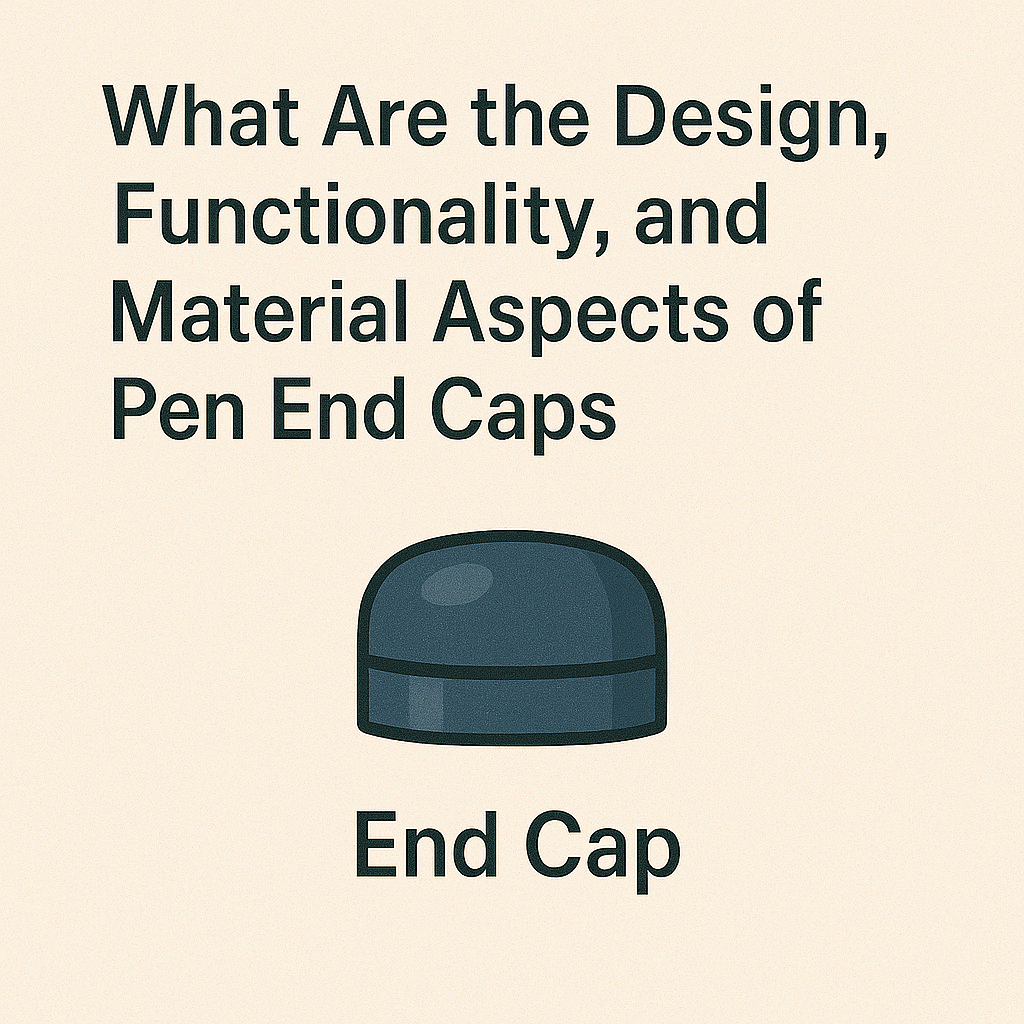What Are the Design, Functionality, and Material Aspects of Pen Caps?
Pen caps are crucial for writing tools. They protect the tip, extend ink life, and make pens portable, allowing users to clip their pen to a pocket. Their design, function, and material are important. These elements influence a pen’s durability and performance.

Key Takeaways
Pen caps vary in shape like round, cone-shaped, or flat and have ventilation holes for safety and to keep ink from drying.
They use mechanisms such as snap-on, twist-off, or push-fit to protect the pen tip and stop ink leaks.
Caps are made from materials like plastic, metal, or rubberized surfaces. These choices impact the cap’s feel and durability.
Design Aspects of Pen Caps
Pen caps come in various shapes: round, cone-shaped, or flat on top. These shapes affect the pen’s feel and look. Comfortable cap designs make writing less tiring, much like comfortable shoes can make walking easier.
Some pen caps have ventilation holes. These holes prevent ink from drying out and allow air flow if the cap is swallowed by accident. Fountain pens often use twist-off caps to keep ink sealed, while ballpoint pens usually have snap-on caps for easy access, making them convenient for pen users.
Each cap type attaches differently to its pen body to ensure it stays secure but is easy to remove when needed.
Shape and Structure
Caps for pens have various shapes, including tubes, cones, and flat tops, which can affect the overall aesthetic of the cap and barrel, especially when considering injection moulded designs. Each shape serves a purpose. For instance, cone-shaped caps fit tightly on fountain pens to prevent the ink from drying out.
The design of these caps is both functional and aesthetically pleasing, often incorporating elements that appeal to pen users, such as conical shapes that enhance the look around the nib while ensuring tightness.
Caps can snap on, twist off, or push-fit onto pens to secure them and prevent leaks in bags or pockets. A well-designed cap and inner cap enhance writing comfort and ease for pen users, particularly when the cap fits securely around the nib. Careful consideration of pen cap design is crucial for creating an effective writing instrument.
Ergonomic Considerations
Pen caps designed for comfort make writing less tiring. A good grip and ease of opening, either by twisting or pulling, reduce strain on fingers and hands during long writing sessions.
These ergonomic designs ensure the cap fits perfectly to prevent leaks.
Materials like rubberized grips provide a better hold and control. The design matches natural hand movements with easy-to-hold shapes that fit snugly between fingers, ensuring a balanced feel during both writing and opening the pen cap.
Ventilation Features
Vent holes in pen caps prevent ink from drying out and maintain freshness, contributing to the overall tightness of the cap. These openings also increase safety by allowing air passage if swallowed. The design prioritizes user safety and ensures pens are always ready for use.
Designers consider user accidents to lower risks and keep fountain or ballpoint pens efficient.
Functional Aspects of Pen Caps
Pen caps play a crucial role in pen design, creating a perfect groove for a snug fit to close the cap securely. They protect the nib from damage, helping the pen last longer and stay ready for writing. By keeping the ink from drying out, caps ensure that fountain pens maintain a smooth ink flow.
Taking your pen places becomes easier with caps. They prevent ink leaks in pockets or bags. With snap-on, twist-off, and push-fit mechanisms, caps secure tightly to minimize the risk of loss and keep ink contained in the body of the pen, making them ideal for carrying in a pocket or notebook.
These designs also help avoid unintentional marks by keeping pens securely closed when not needed.
Protection
The cap prevents the ink from drying out, keeping the pen tip safe. This extends the pen’s life. A well-designed cap ensures everything stays in place. Caps also feature small holes to allow air flow, reducing the risk of choking if swallowed, which is especially important for pen manufacturers.
Thus, caps play a crucial role in protecting both the fountain pen and its user.
Portability and Safety
Pen caps are essential for keeping ink contained, protecting items in your pocket or bag from stains, and ensuring the body of the pen remains intact, especially when using a Montblanc or Kaweco pen. They also feature safety holes to ensure airflow if swallowed accidentally, minimizing the risk of accidental contact. Screw-on and slip-on caps prevent nibs from damage and leaking, making writing instruments like fountain pens safe and mess-free for transport.
These designs keep pens ready for use anytime, without any issues, thanks to the innovative sealing methods employed by pen manufacturers.
Usability Features
Snap-on, twist-off, and push-fit designs ensure pen caps stay secure. This prevents ink from drying out and stops leaks in bags or pockets. Pen caps are easy to handle, making them quick to open and close.
Clips on pens attach to notebooks or shirts, making them easy to carry for note-taking or signing documents, often secured with a clip screw for added stability. The design of pen caps is crucial for keeping the pen ready for use and maintaining ink freshness, which is a priority for pen manufacturers.
Material Aspects of Pen Caps
Pen caps come in various materials. Plastic ones are lightweight and inexpensive, making them popular for everyday use. Metal caps, durable and stylish, appear on pricier pens like Montblanc and Mabie, often favored by discerning pen users for their cap construction. Rubberized caps provide a soft touch and prevent slipping during long writing sessions.
Hybrid caps combine the lightness of plastic with the durability and appearance of metal.
The material of a pen cap affects how it feels, its weight, and its longevity. People select materials based on their needs or preferences—some favor affordability and lightness; others value durability and style, particularly when it comes to the cap construction.
This choice influences fountain pen design, leading to unique writing instruments for different users, including those who prioritize the tip of the nib.
Plastic Caps
Plastic caps are lightweight and cost-effective. They fit a variety of pens, including fountain pens, ballpoint pens, and rollerball pens. There are two main types: snap-on caps and screw-on caps with multi-start threads.
Both designs prevent ink from drying out by creating a tight seal. Snap-on caps use elastic deformation for a secure fit, while screw-on caps rely on threads for closure. These features keep your writing instruments ready for use and protect the pen nib and ink reservoir inside.
Metal Caps
Metal caps on fountain pens offer durability and a premium feel. They protect the nib from damage and contribute to the pen’s aesthetic appeal, making the cap body a significant feature. Combining metal with plastic in caps enhances both appearance and writing experience, making them a vital part of the pen and ensuring the protection of the nib.
Metal helps prevent ink inside from drying out quickly, ensuring consistent ink flow for better writing quality.
Rubberized Caps
Rubber caps on pens provide a non-slip grip, ideal for long writing sessions. They make holding the pen more comfortable and ensure the ink stays wet by creating a tight seal in the barrel of the pen. Small holes in these caps balance air flow to prevent ink from drying out too quickly, making them reliable for daily use.
Hybrid caps combine plastic bodies with metal highlights, blending durability with style, similar to the elegant design of a swan.
Hybrid Caps (Plastic with Metal Accents)
Hybrid caps combine plastic and metal. This mix offers durability and style. Plastic makes the cap light and easy to use. Metal, like a shiny ring, adds elegance to the cap and barrel of the pen. These caps seal tightly to keep ink from drying out, allowing air to escape and maintaining optimal ink flow, which is crucial for the protection of the nib.
They ensure pens can be carried without leaking ink. Hybrid caps represent thoughtful design, focusing on appearance and function, which is important for the overall performance of the nib and feed. They are compatible with various writing instruments, including fountain pens like the Parker 51 and Pelikan, appealing to those who prefer handwritten notes.
Conclusion
Pen caps are important for ensuring that the ink in the barrel of the pen remains fresh. They protect the pen nib and keep the ink fresh. They also prevent leaks when you carry them. The design of a cap, including its shape and features like air holes, affects its function and look, particularly for caps designed to protect the nib against accidental bumps.
Caps can be made of plastic, metal, rubber, or a mix of these materials. This choice influences how the cap feels and its durability, particularly in relation to the inner parts of the cap and its resistance to corrosion. A good cap improves writing quality and extends the life of your pen, ensuring tightness to prevent ink leakage.
FAQs
1. What is the function of a pen cap in fountain pens?
The main function of a pen cap in fountain pens is to protect the nib, control ink flow, and prevent drying out, especially around the nib area. The inner cap has capillary slits that help maintain the ink reservoir.
2. How does the design of a pen cap affect its functionality?
The design of a pen cap, whether it’s screw-on caps or slip-on caps, plays an important role in its functionality. For example, multi-start thread on screw-on caps ensures quick closure while elastic deformation in slip-on caps provides easy use, similar to how Wahl Eversharp designs their caps.
3. Can you explain more about how materials used for pen caps impact their usage?
Materials used for making pen caps like metal ring can influence their durability and comfort level when writing with them. A well-designed metal ring can enhance writing grip and overall user experience.
4. What are some differences between ballpoint pens and fountain pens regarding their cap mechanics?
Ballpoint pens typically have simpler mechanisms compared to fountain pens which may include complex features like an ink cartridge system regulated by an inner-cap mechanism to ensure smooth ink flow.
5. Do all types of writing instruments need a pen cap?
Not all writing instruments need a pen cap; dip pens for example don’t usually come with one as they’re designed to be dipped into an external ink source before each use.
6. Are there any innovative designs seen recently in the world of Pen Caps?
Yes! It’s part of a fountain pen, which often features a carefully designed cap to enhance the overall experience for pen users. With advancements in technology, we see innovations such as cylindrical shaped touchscreen compatible stylus integrated at end of some modern day “pen-caps” allowing usage on devices like iPads without needing separate tools.
